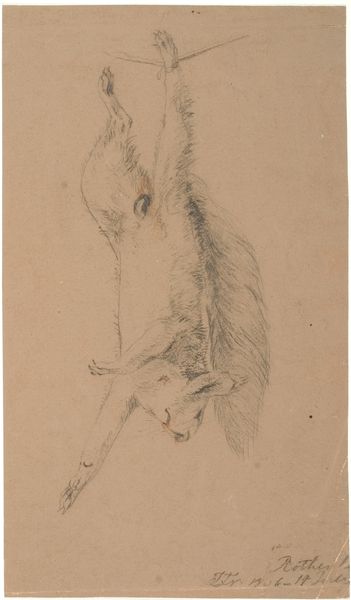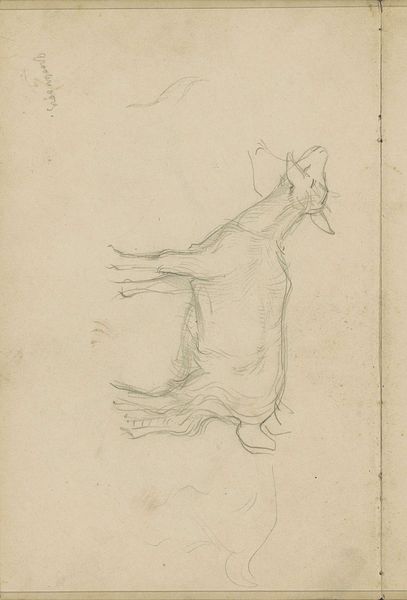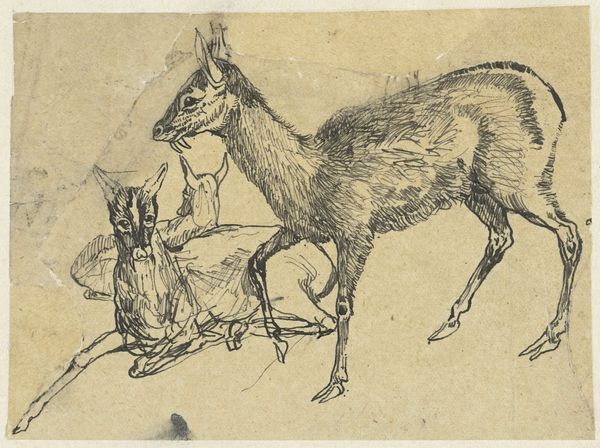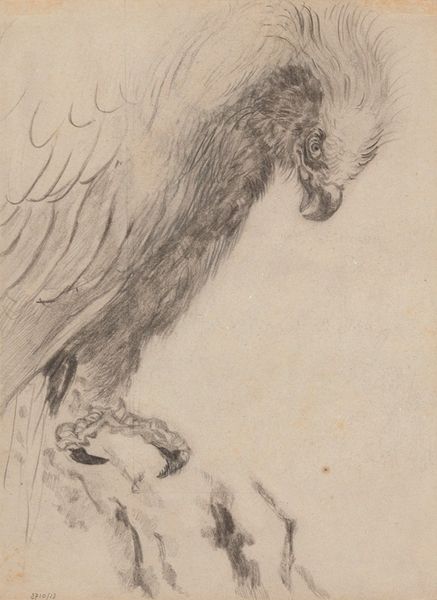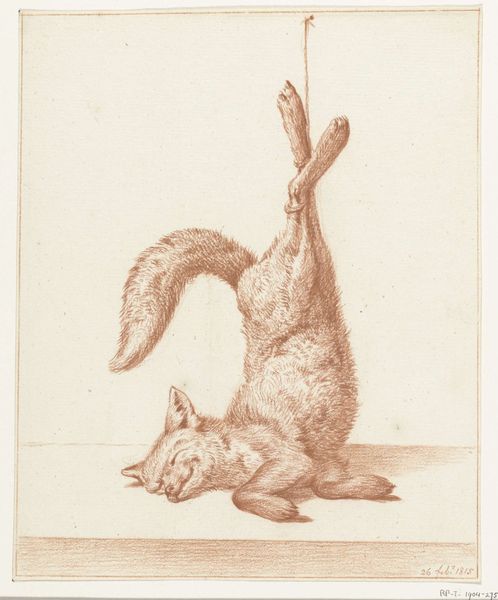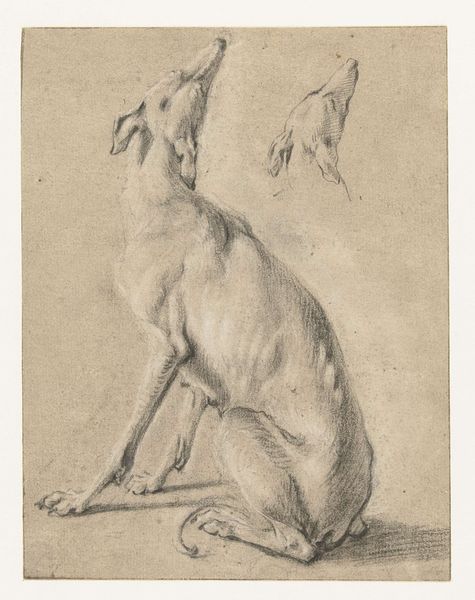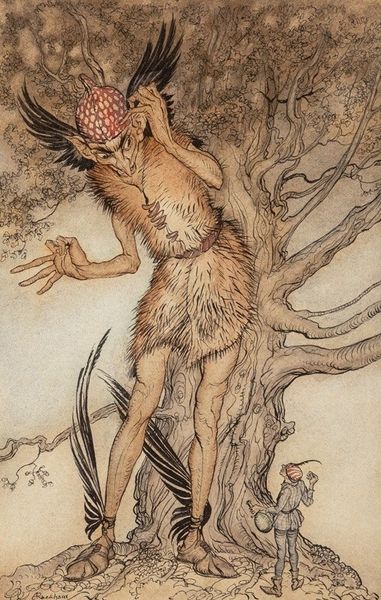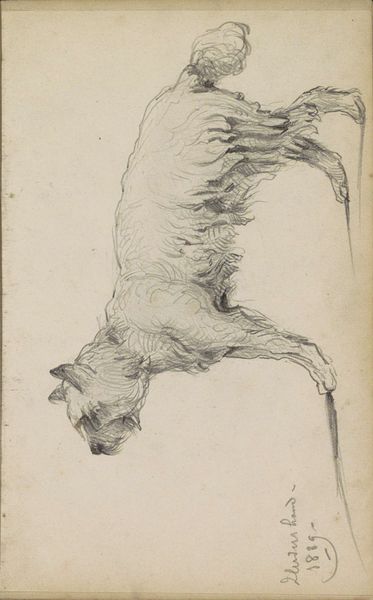
drawing, pen
#
drawing
#
pen sketch
#
figuration
#
pen
#
naturalism
Copyright: Public Domain: Artvee
Richard Nicolaüs Roland Holst created this work, “Dode eekhoorn,” or “Dead Squirrel,” in 1898. The linear quality and delicate strokes shape our perception, inviting contemplation. At first glance, the composition may appear simple. Holst’s use of line and form create the squirrel, which is rendered with incredible detail. The texture of the fur and the delicate rendering of the limbs create a poignant and immediate visual impact. The squirrel is suspended, perhaps a signifier of mortality. Holst focuses on form rather than color and texture. In doing so, the squirrel is portrayed as a specimen under observation, analyzed and interpreted through the formal language of art. Holst explores the intersection between scientific scrutiny and artistic expression. The structure is so effective that it creates an invitation for us to contemplate themes such as life and death. Each viewer brings their own cultural codes to the work, ensuring its ongoing relevance.
Comments
No comments
Be the first to comment and join the conversation on the ultimate creative platform.
